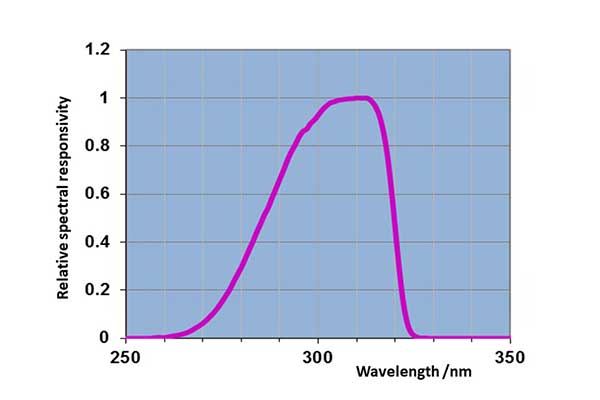
Pulsed Excimer Laser Phototherapy Dosimetry
Phototherapy with narrowband UVB (NB-UVB) radiation is the preferred treatment method for many skin conditions, such as psoriasis, vitiligo, and atopic dermatitis. Low-pressure fluorescent lamps with emission at 311nm are commonly used. However, excimer lamps and lasers offer a high intensity alternative with emission at 308nm. In particular, pulsed excimer lasers enable targeted therapy with higher doses of UVB light resulting in fewer treatment sessions. The ability to target specific areas enables high doses of therapeutically effective monochromatic UVB light while leaving healthy skin unexposed and protected, thereby lowering the risk of premature skin aging and carcinogenesis.
Widedly used NB-UVB phototherapy
NB-UVB phototherapy is now considered the premier treatment for localised vitiligo. NB-UVB light can help stimulate the melanocytes (pigment making cells) in less time than it takes the UV radiation to burn the skin. Psoriasis plaques can withstand higher doses of UV radiation than normal skin Therefore, the targeted delivery possible with excimer lasers permits higher doses and can result in reduced treatment time.
Measurement Equipment Requirements for NB-UVB phototherapy
Accurate dosimetry is crucial with high intensity excimer laser sources. Gigahertz Optik GmbH manufactures and calibrates the special designed UV-3711-308 detector for the measurement of irradiance resulting from excimer laser and lamp illumination. The calibration of its irradiance responsivity is performed at 308 nm. This detector benefits from a flat spectral responsivity around 308 nm which reduces the measurement uncertainty resulting from any wavelength shift by the excimer laser. Together with the P-9710-2 Pulse and Laser Optometer, the pulse energy (dose) of individual pulses or pulse chains can be precisely determined within defined temporal measurement windows. The P-9710-2 Optometer has a pulse energy measuring mode based on the principle of pulse-stretching. This technique employs a meter with a fixed time constant for all gain ranges that is much longer than the short pulses, typically a few ns, produced by the excimer source. High speed sampling, relative to the time constant, enables the pulse energy to be determined by measuring the integral of the resulting ‘pulse-stretched’ signal. See also our Laser measurement application examples. In addition we offer with the P-21 a modern and intuitive touchscreen version of the P-9710 technology.